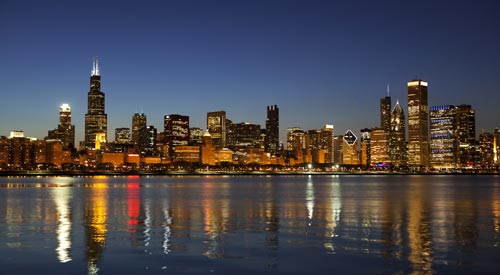Rethinking the Future of Sustainability: The Power of a Global Super Grid
Renewable Energy World: Our forebearers have been integrating the electricity and extending the electric supply grid ever since the installation of the first public lighting by the Godalming Borough Lighting Committee in 1881 shortly followed by the first demonstration facility of transmission of direct current electrical energy by Miesbach-Munich Power Transmission in 1882 over a 57-km distance.
In 1938, Buckminster Fuller envisioned a global electrical energy grid that would allow the integration of renewable resources located in different locations to meet the energy needs of the world. In 1960, Buckminster saw that the energy needs could be transferred cost effectively at a distance of about 1,500 miles. In the traditional Dymaxion Map in folded form, he showed the world to be one huge island contained in one world ocean. In his view, an electric grid that connected everybody would alleviate international disputes and the new economic basis wouldn’t be gold or dollars, but rather kilowatt-hours. In the late 1950s, the Gotland HVDC project was a first, and saw the deployment of a 90-km submarine cable transporting 20 MW. Over time, HVDC technology has improved, and now it is used for interconnecting power grids.
Tags
Share
Top Stories
- Energy Department wants national labs to drive regional innovation
- How solar surge saved Europe from the energy crisis
- Study: Puerto Rico should go solar to meet clean energy goal
- The Federal Government Can Use Its Buying Power to Help the Environment and Save Taxpayers Money
- EVs, Building Emissions Among Biden’s Sustainable Energy Priorities
- Deploying Clean Energy Tech Depends on Cost Efficiency, Officials Say
- National Labs to Receive $1.5B Funding Boost
- Solar, telecom rollouts offer lessons for mass EV charging station deployments
- EPA to strengthen proposed rule on methane emissions from oil, gas
- Getting to ‘Net-zero’ Emissions: How Energy Leaders Envision Countering Climate Change in the Future
- Tech Wanted: Government Calls on Industry to Help with Net-Zero Carbon Buildings
- EPA Calls Out Environmental Racism in Louisiana’s Cancer Alley
- Hawaii to U.S. Navy: Quit Polluting Our Waters
- Climate-Based Trainings and Performance Plans Are Coming for Federal Employees
- Infrastructure permitting reform plan blocked in Senate
- Hydro-Québec’s radical but careful digital transformation could be a model for utilities everywhere
i360Gov Newsletters
The most significant government policy, business, and technology news and analysis delivered to your inbox.
Subscribe NowTrending
- Solar, telecom rollouts offer lessons for mass EV charging station deployments
- Tech Wanted: Government Calls on Industry to Help with Net-Zero Carbon Buildings
- Energy Asks for New R&D in Critical Materials for Clean Energy
- Hydro-Québec’s radical but careful digital transformation could be a model for utilities everywhere
- California sets ‘ambitious’ offshore wind goal of up to 5 GW by 2030
- TSA revises cyber rules for pipelines
- Energy Awards Over $540 Million for Green Tech Research
- National Labs to Receive $1.5B Funding Boost


















